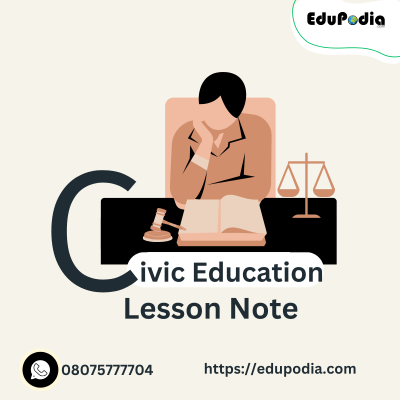Description
This lesson note covers the following topics for JSS3 Second Term Physical and Health Education:
1. Revision of work done for last term.
2. Drug use, miss-use and Abuse: (a) Meaning of drug use, miss-use and abuse.(b)categories of drugs –(i)prescription of drug /medicines.(ii)non prescription of drugs/medicines.(iii)gateway drug.(iv)Psychoactive drug.(c)Health consequences of drug misuse and abuse.(d) ways of preventing drug misuse and abuse among young people.
3. Benefit of physical fitness exercises: (a) Benefits derived from physical fitness exercises.(b)factors that influence physical fitness.
4. Gymnastics (Floor Activities): (a) stunts and tumbling e.g forward roll, head stand and crab walks, cat wheel, frog jump etc. (b).classification of floor activities. (c) Values of floor activities.
5. Traditional social Dances (a) pre- colonial or folk dances like atilogwu in Igbo land, fuji and juju in Yoruba, sharo –fulani and langa in Hausa. (b) Social dances, like reggae, disco, highlife, samba, calypso, rumba and classical.
6. Computer Games: (a) Types of computer games like tennis, scrabble, cricket, and soccer.
(b) Values of Computer games
7. Nutrition for special Groups: (a) nutrition for school children (b) nutrition for adolescents. (c) Nutrition for Athletes, (d) nutrition for the sick and the convalescent.
8. Martial Arts: (a) Taekwondo – origin of taekwondo. (b) History of taekwondo in Nigeria. (c) Importance of taekwondo. (d) Rules regulations and officiating in taekwondo. Boxing: (d) history of boxing. (e) Boxing in Nigeria e. g. Dambe. (f) Skills and techniques in boxing. (g) Rules regulations and officiating in boxing.
9. Swimming: (a) Crawl/free style stroke – (i) breast stroke, (ii) back stroke, (iii) butterfly stroke. (b)Types of competition (c) Officiating in swimming – (i) officials and their duties, (ii) various completion/events
10. Communicable Diseases: (a) nature of (i) measles, (ii) malaria, (iii) mumps, (iv) pneumonia, (v) poliomyelitis, (vi) ring worm, (vii) rubella, (viii) cold, (ix) Whooping cough, (x) tetanus, (xi) cholera, (xii) gonorrhoea,(xiii) syphilis. (b) Mode of transmission of the communicable diseases. (c) Diseases causative agents. (d) Prevention measure
11. Revision.
12. Examination.
Need Second Term JSS3 Physical and Health Education Lesson Note? Scroll up and use the order button to download today!



Reviews
There are no reviews yet.